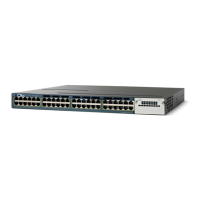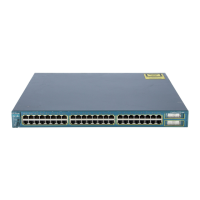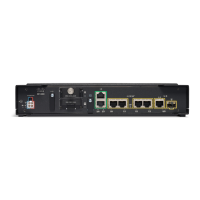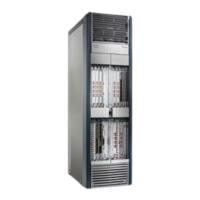1-13
Catalyst 3750-X and 3560-X Switch Software Configuration Guide
OL-25303-03
Chapter 1 Configuring IPv6 Unicast Routing
Understanding IPv6
For more information about EIGRP for IPv6, see the “Implementing EIGRP for IPv6” chapter in the
Cisco IOS IPv6 Configuration Library on Cisco.com.
HSRP for IPv6
Switches running the IP-services feature set support the Hot Standby Router Protocol (HSRP) for IPv6.
HSRP provides routing redundancy for routing IPv6 traffic not dependent on the availability of any
single router. IPv6 hosts learn of available routers through IPv6 neighbor discovery router advertisement
messages. These messages are multicast periodically or are solicited by hosts.
An HSRP IPv6 group has a virtual MAC address that is derived from the HSRP group number and a
virtual IPv6 link-local address that is, by default, derived from the HSRP virtual MAC address. Periodic
messages are sent for the HSRP virtual IPv6 link-local address when the HSRP group is active. These
messages stop after a final one is sent when the group leaves the active state.
For more information about configuring HSRP for IPv6, see the “Configuring First Hop Redundancy
Protocols in IPv6” chapter in the Cisco IOS IPv6 Configuration Library on Cisco.com.
SNMP and Syslog Over IPv6
To support both IPv4 and IPv6, IPv6 network management requires both IPv6 and IPv4 transports.
Syslog over IPv6 supports address data types for these transports.
SNMP and syslog over IPv6 provide these features:
• Support for both IPv4 and IPv6
• IPv6 transport for SNMP and to modify the SNMP agent to support traps for an IPv6 host
• SNMP- and syslog-related MIBs to support IPv6 addressing
• Configuration of IPv6 hosts as trap receivers
For support over IPv6, SNMP modifies the existing IP transport mapping to simultaneously support IPv4
and IPv6. These SNMP actions support IPv6 transport management:
• Opens User Datagram Protocol (UDP) SNMP socket with default settings
• Provides a new transport mechanism called SR_IPV6_TRANSPORT
• Sends SNMP notifications over IPv6 transport
• Supports SNMP-named access lists for IPv6 transport
• Supports SNMP proxy forwarding using IPv6 transport
• Verifies SNMP Manager feature works with IPv6 transport
For information on SNMP over IPv6, including configuration procedures, see the “Managing Cisco IOS
Applications over IPv6” chapter in the Cisco IOS IPv6 Configuration Library on Cisco.com.
For information about syslog over IPv6, including configuration procedures, see the “Implementing IPv6
Addressing and Basic Connectivity” chapter in the Cisco IOS IPv6 Configuration Library on Cisco.com.
HTTP(S) Over IPv6
The HTTP client sends requests to both IPv4 and IPv6 HTTP servers, which respond to requests from
both IPv4 and IPv6 HTTP clients. URLs with literal IPv6 addresses must be specified in hexadecimal
using 16-bit values between colons.

